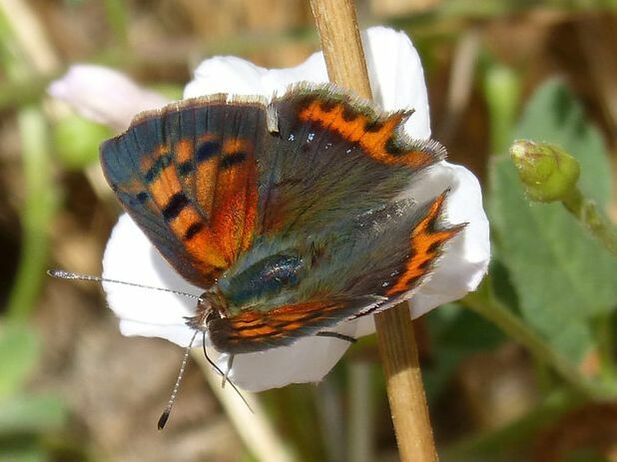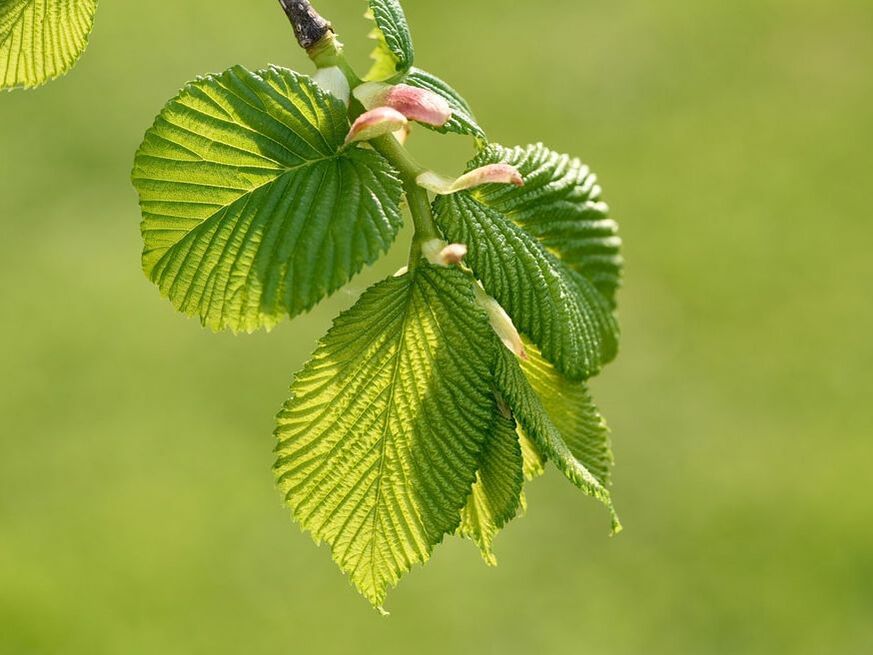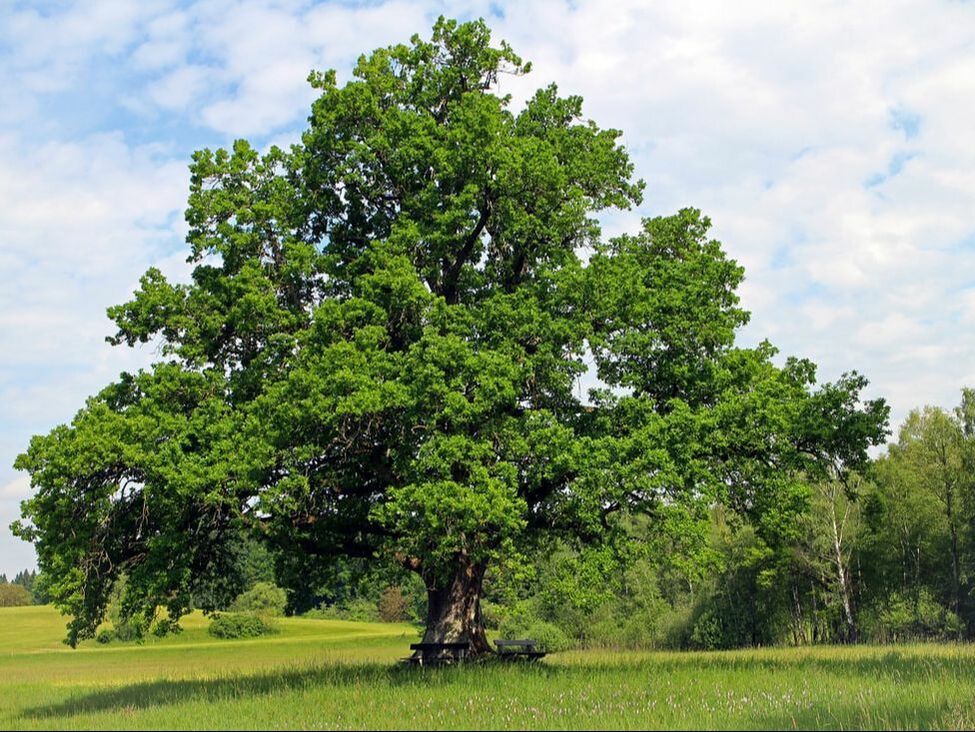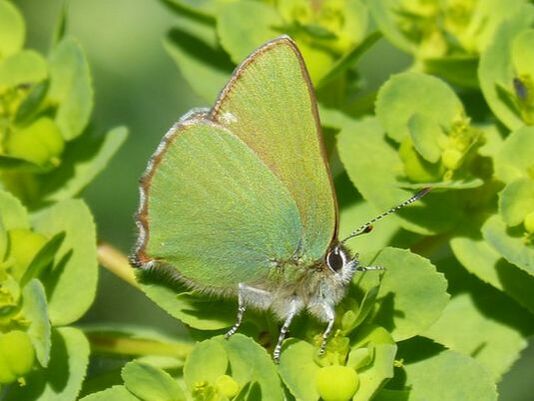Coppers and Hairstreaks
Caterpillars of several of the Hairstreak butterflies prefer the leaves and buds of trees to those of wildflowers.
The adults in their turn prefer aphid honeydew to nectar.
The adults in their turn prefer aphid honeydew to nectar.
THE COPPERS
The Small Copper is one of our most common butterflies. It helps that its favorite foodplants, COMMON SORREL AND SHEEP'S SORREL have adapted well to human habitation and are still abundant over most of the country. The Large Copper in contrast is extinct in Britain with some attempts having been made to re-introduce it from Holland. Adult Small Coppers drink nectar from a variety of wildflowers.
THE HAIRSTREAKS
In contrast, all of the closely related Hairstreaks native to Britain obtain their sugary fuel, not from nectar-rich flowers but from aphid honeydew. That's the sticky stuff that appears on the roof of a car when it's parked for a few hours under a soft-leaved tree like a maple in spring. The sap of the fresh leaves and buds on which aphids feed is very high in sugars and low in amino acids, so to redress the balance they eliminate most of the sugar.
Female hairstreaks lay their eggs on the branches of trees, the kind of tree chosen depending on the kind of hairstreak. Trees growing in sunny, sheltered locations are usually preferred. The eggs remain on the branches over winter, the caterpillars waiting until spring to emerge, once the buds and leaves are available for them to eat. An exception is the Green Hairstreak which follows the more common butterfly strategy of hibernating as a chrysalis.
The Small Copper is one of our most common butterflies. It helps that its favorite foodplants, COMMON SORREL AND SHEEP'S SORREL have adapted well to human habitation and are still abundant over most of the country. The Large Copper in contrast is extinct in Britain with some attempts having been made to re-introduce it from Holland. Adult Small Coppers drink nectar from a variety of wildflowers.
THE HAIRSTREAKS
In contrast, all of the closely related Hairstreaks native to Britain obtain their sugary fuel, not from nectar-rich flowers but from aphid honeydew. That's the sticky stuff that appears on the roof of a car when it's parked for a few hours under a soft-leaved tree like a maple in spring. The sap of the fresh leaves and buds on which aphids feed is very high in sugars and low in amino acids, so to redress the balance they eliminate most of the sugar.
Female hairstreaks lay their eggs on the branches of trees, the kind of tree chosen depending on the kind of hairstreak. Trees growing in sunny, sheltered locations are usually preferred. The eggs remain on the branches over winter, the caterpillars waiting until spring to emerge, once the buds and leaves are available for them to eat. An exception is the Green Hairstreak which follows the more common butterfly strategy of hibernating as a chrysalis.
SMALL COPPER
|
WHITE-LETTER HAIRSTREAK
|
PURPLE HAIRSTREAK
|
GREEN HAIRSTREAK
|
BLACK HAIRSTREAK (Strymonidia pruni) and BROWN HAIRSTREAK (Thecla betulae)
The caterpillars of both species have a similar taste in buds and leaves, The females lay their eggs either singly or as a pair on the stems of BLACKTHORN, and sometimes WILD PLUM. After overwintering as an egg, on emerging in spring, they browse on the flower buds and then the leaves.
The Black Hairstreak has a very limited range, its main breeding grounds consisting of a number of woods between Peterborough and Oxford. Its reluctance to fly very far away from its home territory is a major obstacle to it colonising new areas, despite habitats that are apparently suitable being available elsewhere. Although they lay their eggs on Blackthorn, the adults spend most of their time high up on Field Maple and Ash trees, where they feed on the aphid honeydew. The caterpillars change colour as they grow from deep chestnut to a patterned light green to blend in with the foliage. The chrysalis resembles a bird dropping.
The range of the Brown Hairstreak is somewhat wider. It is found in the Burren in Ireland, south west Wales and southern counties of England. The caterpillars are pale green with yellow stripes and well camouflaged against Blackthorn leaves. Adults live in small woodland colonies feeding on honeydew.
The caterpillars of both species have a similar taste in buds and leaves, The females lay their eggs either singly or as a pair on the stems of BLACKTHORN, and sometimes WILD PLUM. After overwintering as an egg, on emerging in spring, they browse on the flower buds and then the leaves.
The Black Hairstreak has a very limited range, its main breeding grounds consisting of a number of woods between Peterborough and Oxford. Its reluctance to fly very far away from its home territory is a major obstacle to it colonising new areas, despite habitats that are apparently suitable being available elsewhere. Although they lay their eggs on Blackthorn, the adults spend most of their time high up on Field Maple and Ash trees, where they feed on the aphid honeydew. The caterpillars change colour as they grow from deep chestnut to a patterned light green to blend in with the foliage. The chrysalis resembles a bird dropping.
The range of the Brown Hairstreak is somewhat wider. It is found in the Burren in Ireland, south west Wales and southern counties of England. The caterpillars are pale green with yellow stripes and well camouflaged against Blackthorn leaves. Adults live in small woodland colonies feeding on honeydew.



